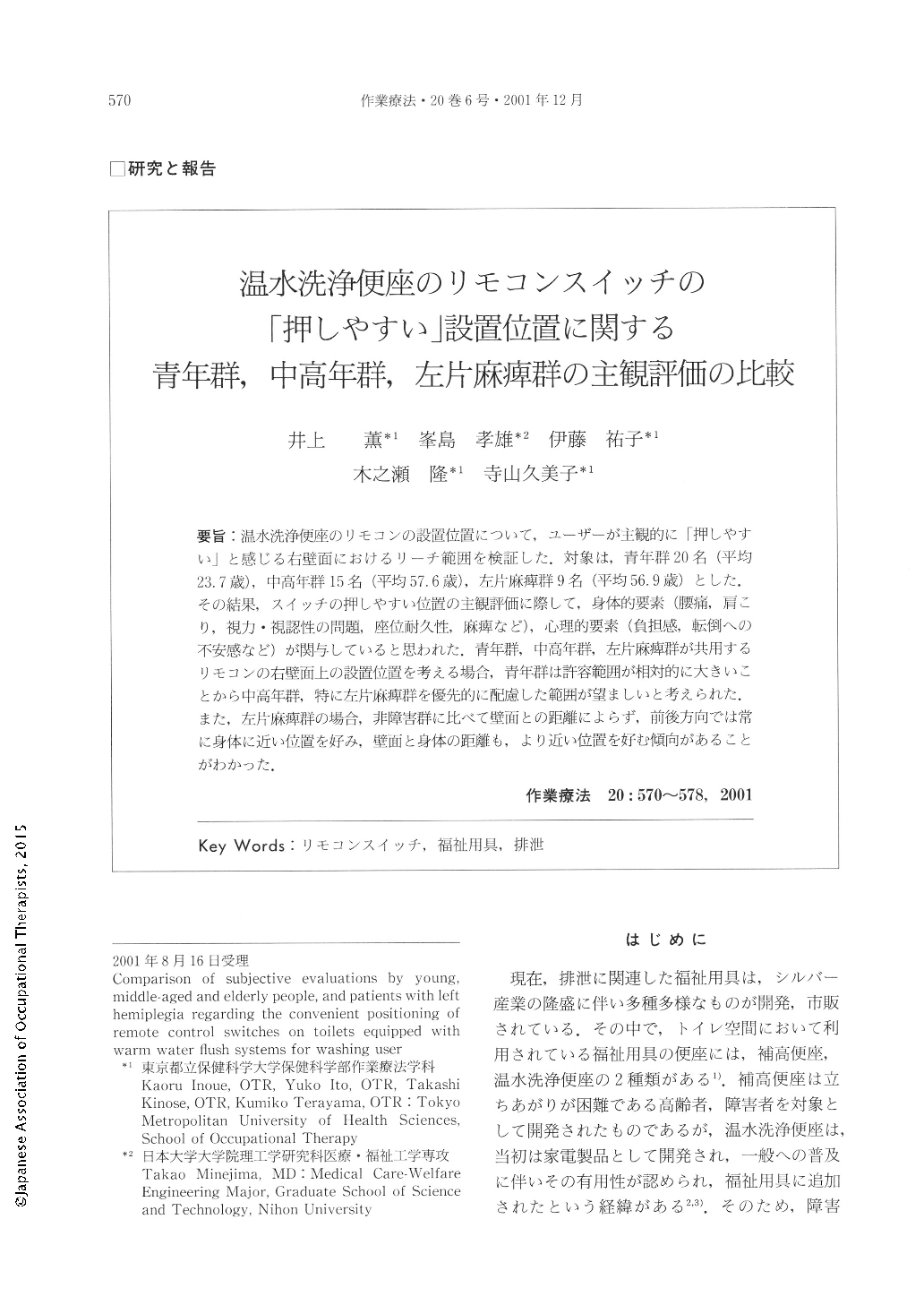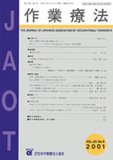Japanese
English
- 販売していません
- Abstract 文献概要
- 1ページ目 Look Inside
- 参考文献 Reference
- サイト内被引用 Cited by
要旨:温水洗浄便座のリモコンの設置位置について,ユーザーが主観的に「押しやすい」と感じる右壁面におけるリーチ範囲を検証した.対象は,青年群20名(平均23.7歳),中高年群15名(平均57.6歳),左片麻痺群9名(平均56.9歳)とした.その結果,スイッチの押しやすい位置の主観評価に際して,身体的要素(腰痛,肩こり,視力・視認性の問題,座位耐久性,麻痺など),心理的要素(負担感,転倒への不安感など)が関与していると思われた.青年群,中高年群,左片麻痺群が共用するリモコンの右壁面上の設置位置を考える場合,青年群は許容範囲が相対的に大きいことから中高年群,特に左片麻痺群を優先的に配慮した範囲が望ましいと考えられた.また,左片麻痺群の場合,非障害群に比べて壁面との距離によらず,前後方向では常に身体に近い位置を好み,壁面と身体の距離も,より近い位置を好む傾向があることがわかった.
We studied the reach with which the aged and disabled users feel comfortable based on their subjective judgement regarding positions of remote control switches on the toilet. The subjects included 20 young people (7 male and 13 female, 19 to 35 years old; the mean age was 23.7 years old), 15 middle-aged and elderly people (10 male and 5 female, 41 to 69 years old; the mean age was 57.6 years old), and 9 patients with left hemiplegia who were in T hospital in Tokyo (3 male and 6 female, 24 to 73 years old; the mean age was 56. 9 years old). We found that factors on the subjective evaluation of the optimal position of switches are related to the following: 1. physical factors and 2. psychological factors. When considering convenient positions of remote control switches for young, middle-aged and elderly subjects, and patients with left hemiplegia, it is desirable to give priority to the latter. Patients with left hemiplegia, in spite of the distance from the wall, tend to like positions near themselves.

Copyright © 2001, Japanese Association of Occupational Therapists. All rights reserved.


